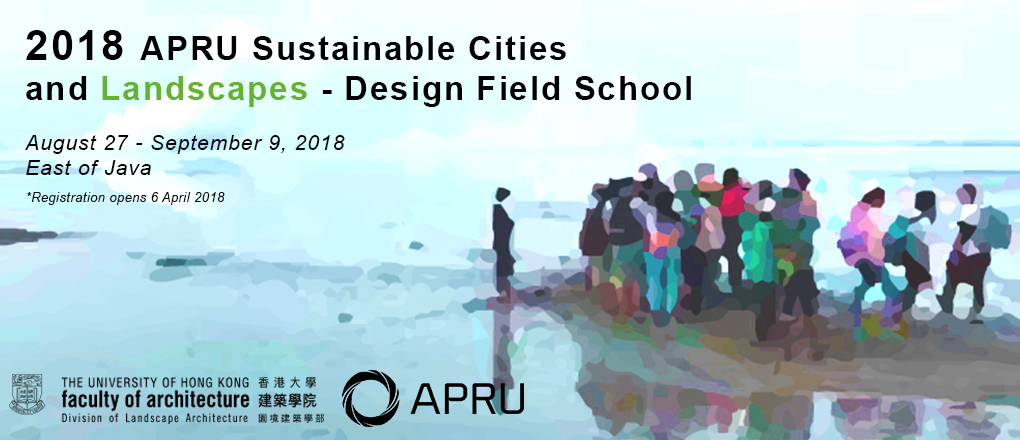
APRU-SCL Design Field School, was run in parallel to the main conference and brought together students from participating universities to explore issues of modernisation and its impact on the sustainability of some of SE Asia’s most remarkable natural landscapes and urban communities, including the sprawling urban metropolis of Surabaya in East Java, the rich volcanic landscapes of Eastern Java, the cultural splendour of the island of Bali, and high-rise high-density urban living in Hong Kong.
Participating students were able to explore a number of topical sustainability issues, including
- Migrant labour and changes in gender roles as economic drivers
- Modernisation through air transportation and digital communication
- Eco-tourism and environmental conservation
- Threats and benefits – agriculture and resource extraction
- Impacts of climate change on coastal communities
- Desakota as the ultimate rural-urban settlement paradigm
- Public health and education – as metrics for sustainable communities
The School will be led by academic instructors from the Division of Landscape Architecture at HKU, in partnership with local academics, and environmental / social groups in Java and Bali.
Outline
‘East of Java’ references the 1969 American disaster film ‘Krakatoa, East of Java’, a story of the massive eruption of the Krakatoa volcano in 1883. The “geographic error in the film′s title of placing the doomed island east of Java” (Krakatoa lying in the Sunda Strait, to the west of Java) was symbolic of the broad disinterest that the film makers (and a western audience) had of the landscape and people of Java at the time.
Java, once a global centre of trade (spice, timber) under Dutch colonial rule, lost much of its influence at the end of the colonial period, and with the upheaval of Japanese occupation during the war, followed by the struggle for independence and then the period of dictatorship under Suharto, it faded into international obscurity, especially when compared to its diminutive island neighbour, Bali (which is East of Java!)
Sudden liberation following the end of the Suharto period led to rapid modernisation, and sizeable changes in the Javanese economy and society. In recent decades there have been big improvements in public health and educational standards and notable shifts in gender roles (remittances from migration women serving as domestic helpers overseas are a key factor). Yet due to the chronic lack of investment in road and power infrastructure, and an archaic land ownership system, Java is still today a broadly rural community. Development has been local and small scale, resulting in a constrained ‘desakota’ form of dispersed urbanism (as in many SE Asian countries), and an economy still based on primary industries (agriculture and mineral extraction) and specialist eco-tourism. The recent rise of alternative modes of development based on cheap local air transportation and mobile telecommunications, however, is again offering potential new ways ahead.
Photos of the Design Field School can be found here.
